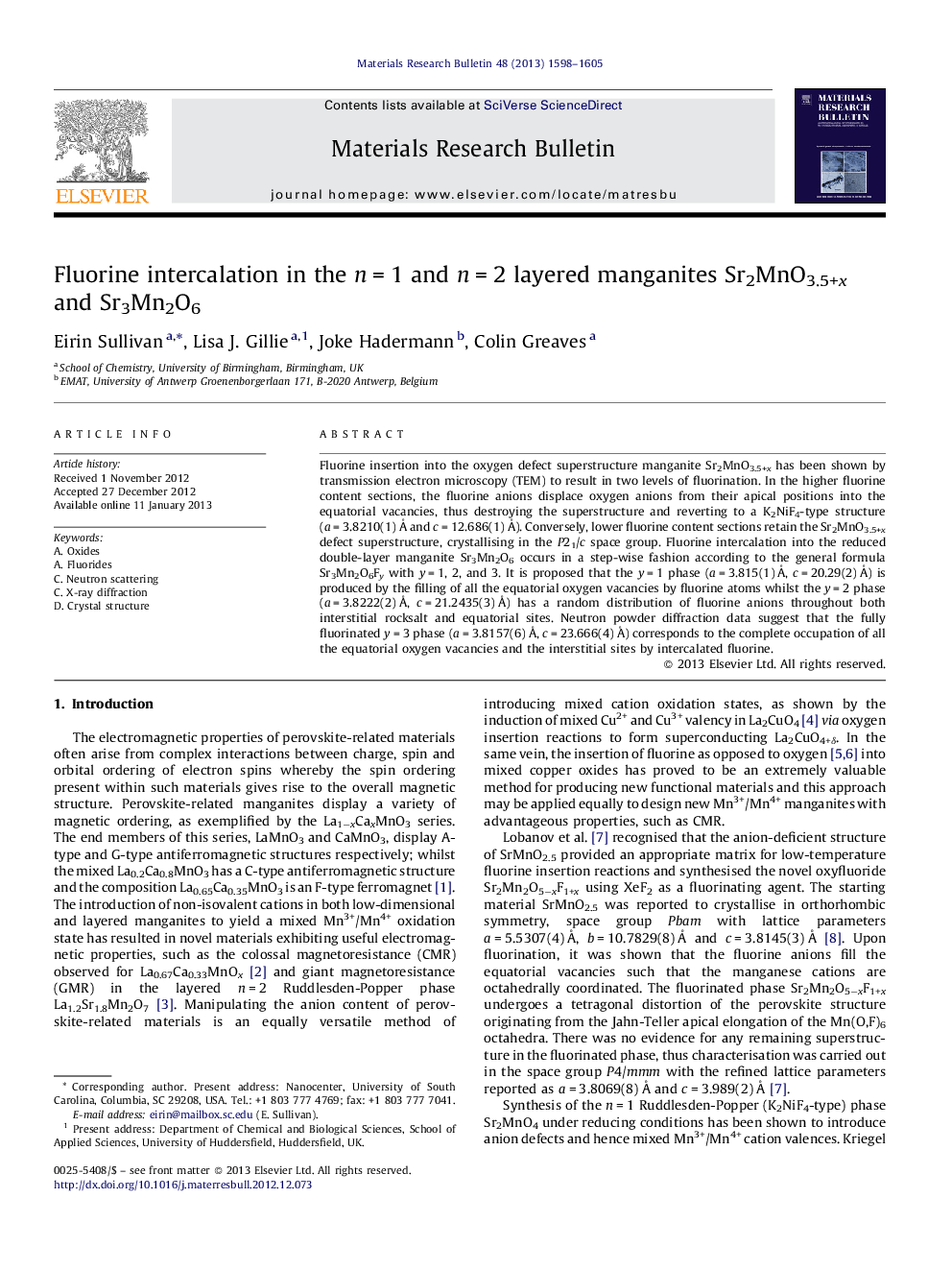| Article ID | Journal | Published Year | Pages | File Type |
|---|---|---|---|---|
| 1489081 | Materials Research Bulletin | 2013 | 8 Pages |
Fluorine insertion into the oxygen defect superstructure manganite Sr2MnO3.5+x has been shown by transmission electron microscopy (TEM) to result in two levels of fluorination. In the higher fluorine content sections, the fluorine anions displace oxygen anions from their apical positions into the equatorial vacancies, thus destroying the superstructure and reverting to a K2NiF4-type structure (a = 3.8210(1) Å and c = 12.686(1) Å). Conversely, lower fluorine content sections retain the Sr2MnO3.5+x defect superstructure, crystallising in the P21/c space group. Fluorine intercalation into the reduced double-layer manganite Sr3Mn2O6 occurs in a step-wise fashion according to the general formula Sr3Mn2O6Fy with y = 1, 2, and 3. It is proposed that the y = 1 phase (a = 3.815(1) Å, c = 20.29(2) Å) is produced by the filling of all the equatorial oxygen vacancies by fluorine atoms whilst the y = 2 phase (a = 3.8222(2) Å, c = 21.2435(3) Å) has a random distribution of fluorine anions throughout both interstitial rocksalt and equatorial sites. Neutron powder diffraction data suggest that the fully fluorinated y = 3 phase (a = 3.8157(6) Å, c = 23.666(4) Å) corresponds to the complete occupation of all the equatorial oxygen vacancies and the interstitial sites by intercalated fluorine.
Graphical abstractFigure optionsDownload full-size imageDownload as PowerPoint slideHighlights► Sr2MnO3.5+x and Sr3Mn2O6 are amenable to fluorine insertion reactions. ► Sr2MnO3.5+xFy has K2NiF4-type structure (a = 3.8210(1) Å and c = 12.686(1) Å. ► Sr3Mn2O6Fy has different levels of fluorine content with y = 1, 2, and 3.
